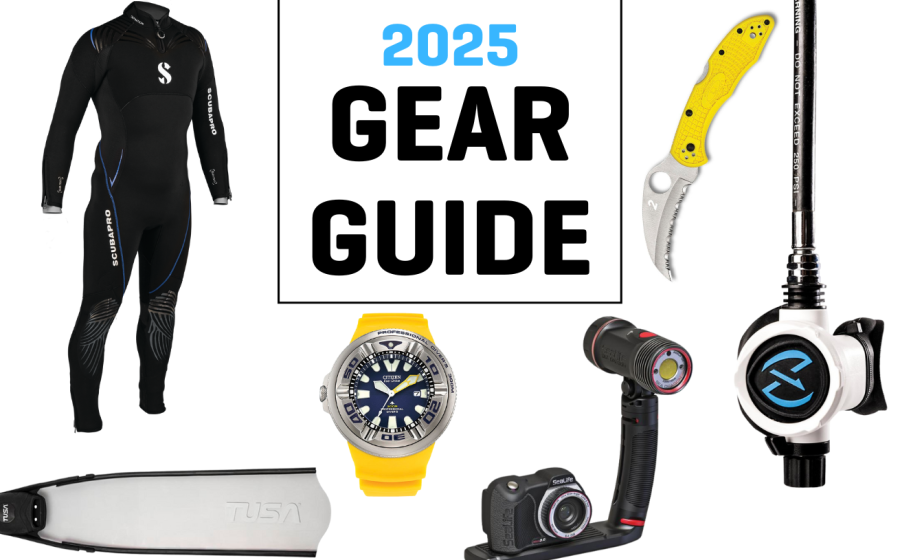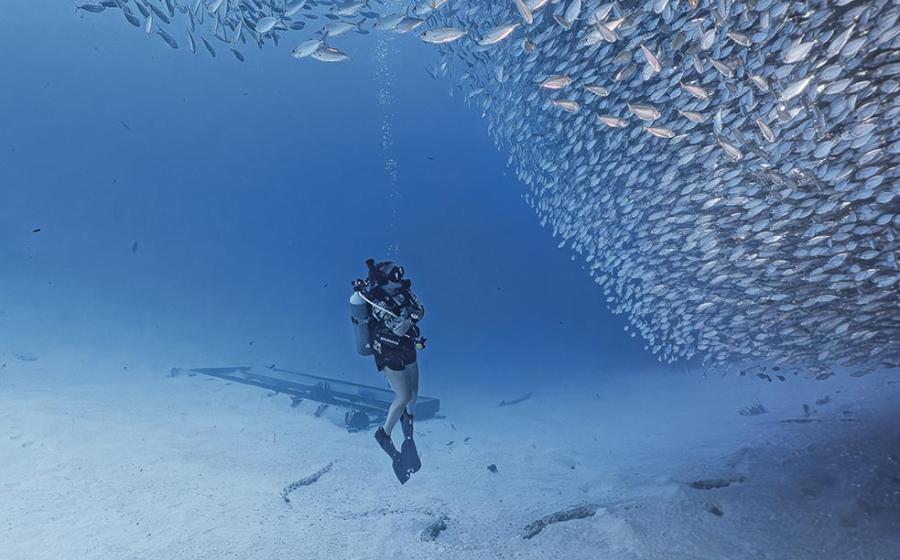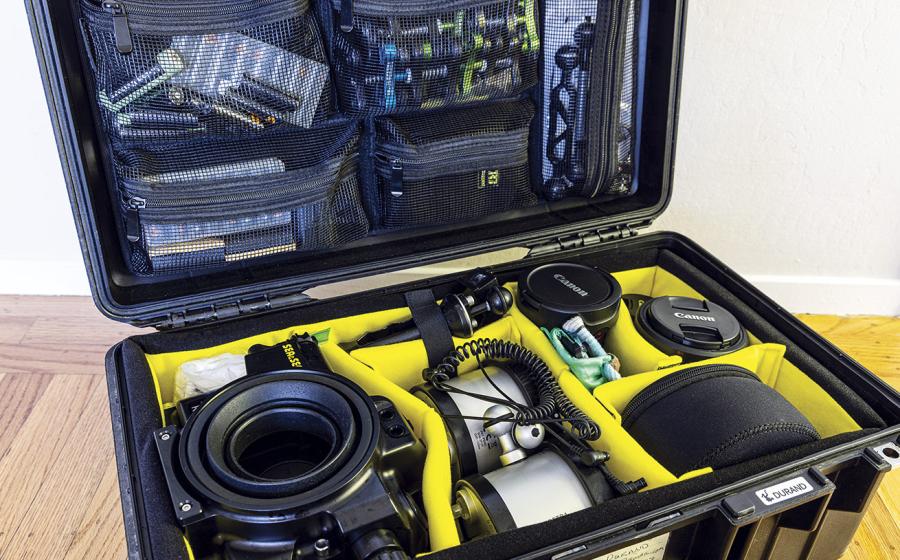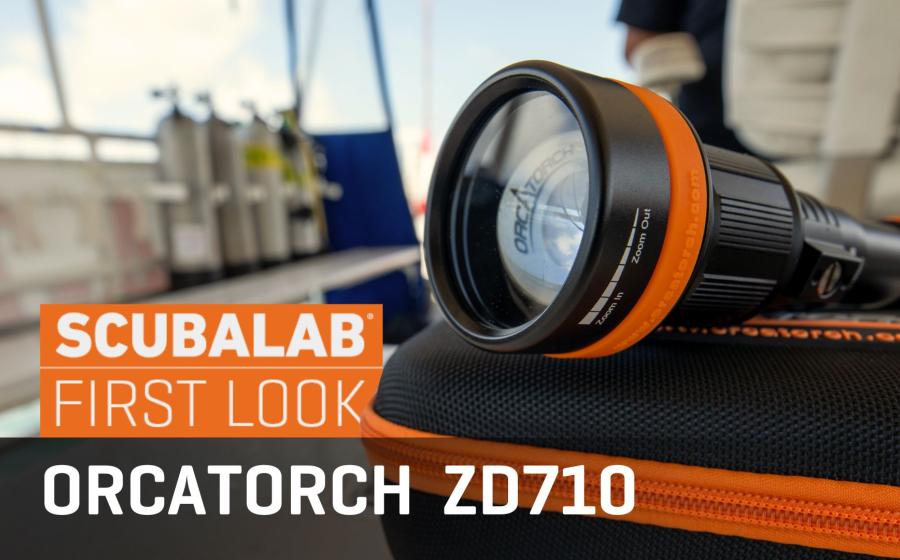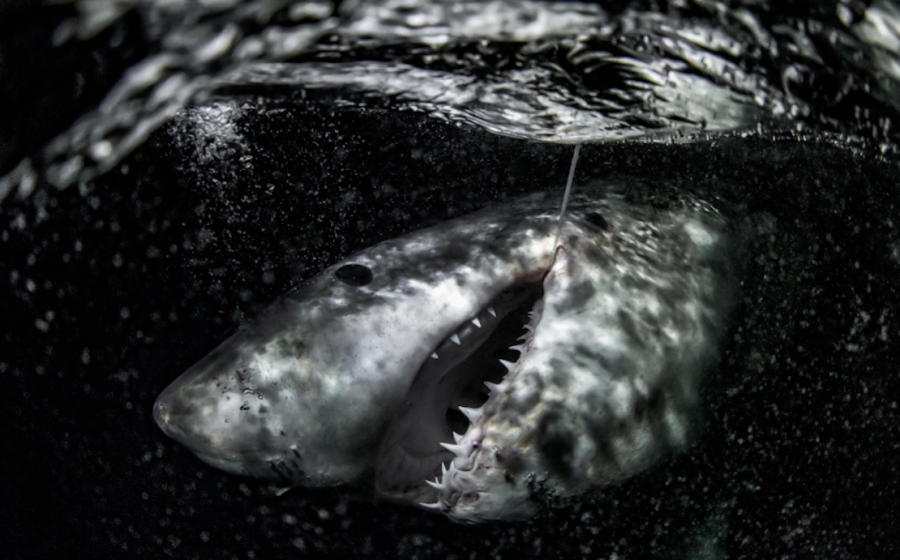The Andrea Doria
Making History
By Evelyn Bartram Dudas
Viking Starlite_docked out of Montauk, NY, agreed to take a group of hard-core New Jersey wreck divers to the _Andrea Doria. It was the second year that a charter had been organized by George Hoffman and Mike DeCamp, two well-known wreck divers. The boat fee was $10 a day for three days and the food cost $28 for a grand total cost of $58. It was a 10-hour run to get to the site. We anchored over the Doria with two big Danforth sand anchors that bridled the wreck. Then a team went in the secure a downline to the wreck.
The down line was tied into the port docking wing in the stern of the wreck. On my first dive, my future husband, John Dudas, and I swam forward over a railing and down into a companionway which was the promenade deck. I was determined to be the first to find an artifact, until we got to some open double doors. I had my trusty, new Darrell-Allan light, but the bulb was rolling around inside the reflector, I guess from 10 hours of vibration on the boat ride to the wreck. No going inside for me. I spotted a bowl made out of brass attached to a piece of thin sheeting. I wrestled with it until it came free.
We were at 170 feet and our dive plan called for a 20-minute bottom time. After John came back out of the dark cavernous hole, we turned the dive and I swam aft popping out of the promenade deck onto a very white hull. Before I knew it I had swum to the port propeller, past the down line! I was narced! Looking back, I saw the port docking wing where our down line was chained in. My heart was racing, my chest pounding: Would I run out of air? I was too poor to purchase a pressure gauge. All the deep air dives I had done in preparation for this dive trip I usually had 500 psi left. I hustled back to the line and quickly made my ascent.
Much later in the afternoon, Ed Rush and I dove to the smoke stack, which was still in place. There were lots of trawler nets attached to the superstructure, suspended by big glass. However, for me, the most amazing thing was seeing a huge cod with its whiskers on the door sill and its tail touching the header of a doorway near the smokestack. I know all fishermen are liars and divers are no better, but I later stood in the same doorway of the sister ship, Christoforo Colombo. I am 5 foot 8 inches. That was the biggest cod I have ever seen.
The third morning, John wanted to get in the water first. He had a secret. He had discovered the wheelhouse with things in it. Nobody talked about secret stashes; if you did you would have to share your artifacts. So before breakfast, and freezing the moment I hit the water, I followed John down. He never had to equalize any other way besides swallowing and was way out in front of me. I usually make the effort to look at where the down line is tied in. To my horror, two of the three strands of our one-inch nylon line had been cut from abrasion by the jagged and bent frame of the port bridge wing and come unfurled. I thought of the previous day's episode and knew we did not have an up-line with us today. Would it hold? John had already disappeared. There was a doorway into the wheelhouse directly under me. I dropped down and peered in. John was facing aft with his fins in one of the window frames of the wheelhouse and was attempting to remove the brass cover on the binnacle, dead center of the ship at 205 feet.
Not wishing to get in his way, I kicked to a doorway up high on the back wall of the wheelhouse and entered the dayroom. I pulled off a door handle and a brass cover from a florescent light. I stuffed them in my little goodie bag. Then I turned, facing forward now and shaking violently from the cold, and looked out on the scene taking place in front of me. I carefully slid down the aft wall to grasp the wooden steering wheel firmly affixed to the helm, just as a helmsman would. By this time John had figured out how to remove the binnacle cover and was pulling with both hands on the ship's compass.
Buoyancy compensators were unheard of in 1967. We had flat little vests with CO2 cartridges that were designed for surface flotation but they weren't going to help at this depth. Just to exit the wheelhouse, I had to stand on the pedestal of the auxiliary helm to reach the radar pedestal and then pull myself up to the door sill. Once out of the wheelhouse I peeked back inside. John had somehow muscled both the 17-pound compass and the six-pound cover into his goodie bag and attached them to his lift bag. I departed to look at the condition of the line. John had come down on the back side of the wing and was unaware of the impending danger. The line was still there!
The down line, on the way up, did the strangest thing. It formed a big S from the cross currents running in opposite directions midway up the line. At my 20-foot deco stop, the current was so bad that the monster knife strapped to my calf was being pulled three inches away from my leg. If I turned my head, the current pulled my mask away from my face and filled with water! Once we were back on board the boat, the anchor-line parted leaving George Hoffman and Frank West on the wreck. After retrieving them hours later, we did not re-anchor but decided to stop on the American submarine USS Bass on the way back to Montauk. The compass and binnacle cover turned out to be the artifacts of the trip.
Several years later, I met Bob Hollis at a New England Divers sale after he had just finished his dives with Peter Gimbel and he was adamant that the wheelhouse was no longer there. It had collapsed and tumbled to the sea floor in the intervening years.
Making History
By Evelyn Bartram Dudas
Viking Starlite_docked out of Montauk, NY, agreed to take a group of hard-core New Jersey wreck divers to the _Andrea Doria. It was the second year that a charter had been organized by George Hoffman and Mike DeCamp, two well-known wreck divers. The boat fee was $10 a day for three days and the food cost $28 for a grand total cost of $58. It was a 10-hour run to get to the site. We anchored over the Doria with two big Danforth sand anchors that bridled the wreck. Then a team went in the secure a downline to the wreck.
The down line was tied into the port docking wing in the stern of the wreck. On my first dive, my future husband, John Dudas, and I swam forward over a railing and down into a companionway which was the promenade deck. I was determined to be the first to find an artifact, until we got to some open double doors. I had my trusty, new Darrell-Allan light, but the bulb was rolling around inside the reflector, I guess from 10 hours of vibration on the boat ride to the wreck. No going inside for me. I spotted a bowl made out of brass attached to a piece of thin sheeting. I wrestled with it until it came free.
We were at 170 feet and our dive plan called for a 20-minute bottom time. After John came back out of the dark cavernous hole, we turned the dive and I swam aft popping out of the promenade deck onto a very white hull. Before I knew it I had swum to the port propeller, past the down line! I was narced! Looking back, I saw the port docking wing where our down line was chained in. My heart was racing, my chest pounding: Would I run out of air? I was too poor to purchase a pressure gauge. All the deep air dives I had done in preparation for this dive trip I usually had 500 psi left. I hustled back to the line and quickly made my ascent.
Much later in the afternoon, Ed Rush and I dove to the smoke stack, which was still in place. There were lots of trawler nets attached to the superstructure, suspended by big glass. However, for me, the most amazing thing was seeing a huge cod with its whiskers on the door sill and its tail touching the header of a doorway near the smokestack. I know all fishermen are liars and divers are no better, but I later stood in the same doorway of the sister ship, Christoforo Colombo. I am 5 foot 8 inches. That was the biggest cod I have ever seen.
The third morning, John wanted to get in the water first. He had a secret. He had discovered the wheelhouse with things in it. Nobody talked about secret stashes; if you did you would have to share your artifacts. So before breakfast, and freezing the moment I hit the water, I followed John down. He never had to equalize any other way besides swallowing and was way out in front of me. I usually make the effort to look at where the down line is tied in. To my horror, two of the three strands of our one-inch nylon line had been cut from abrasion by the jagged and bent frame of the port bridge wing and come unfurled. I thought of the previous day's episode and knew we did not have an up-line with us today. Would it hold? John had already disappeared. There was a doorway into the wheelhouse directly under me. I dropped down and peered in. John was facing aft with his fins in one of the window frames of the wheelhouse and was attempting to remove the brass cover on the binnacle, dead center of the ship at 205 feet.
Not wishing to get in his way, I kicked to a doorway up high on the back wall of the wheelhouse and entered the dayroom. I pulled off a door handle and a brass cover from a florescent light. I stuffed them in my little goodie bag. Then I turned, facing forward now and shaking violently from the cold, and looked out on the scene taking place in front of me. I carefully slid down the aft wall to grasp the wooden steering wheel firmly affixed to the helm, just as a helmsman would. By this time John had figured out how to remove the binnacle cover and was pulling with both hands on the ship's compass.
Buoyancy compensators were unheard of in 1967. We had flat little vests with CO2 cartridges that were designed for surface flotation but they weren't going to help at this depth. Just to exit the wheelhouse, I had to stand on the pedestal of the auxiliary helm to reach the radar pedestal and then pull myself up to the door sill. Once out of the wheelhouse I peeked back inside. John had somehow muscled both the 17-pound compass and the six-pound cover into his goodie bag and attached them to his lift bag. I departed to look at the condition of the line. John had come down on the back side of the wing and was unaware of the impending danger. The line was still there!
The down line, on the way up, did the strangest thing. It formed a big S from the cross currents running in opposite directions midway up the line. At my 20-foot deco stop, the current was so bad that the monster knife strapped to my calf was being pulled three inches away from my leg. If I turned my head, the current pulled my mask away from my face and filled with water! Once we were back on board the boat, the anchor-line parted leaving George Hoffman and Frank West on the wreck. After retrieving them hours later, we did not re-anchor but decided to stop on the American submarine USS Bass on the way back to Montauk. The compass and binnacle cover turned out to be the artifacts of the trip.
Several years later, I met Bob Hollis at a New England Divers sale after he had just finished his dives with Peter Gimbel and he was adamant that the wheelhouse was no longer there. It had collapsed and tumbled to the sea floor in the intervening years.

